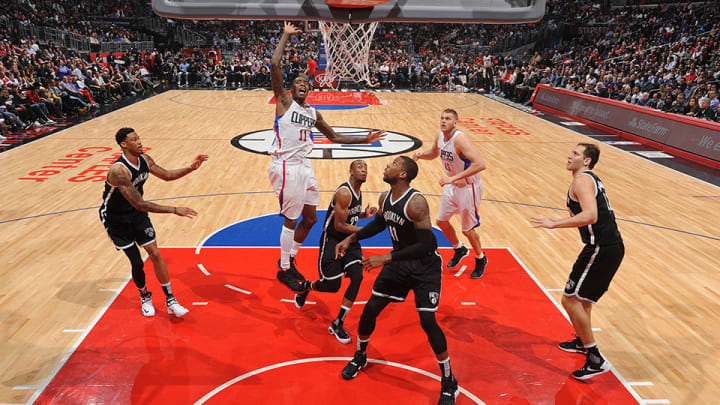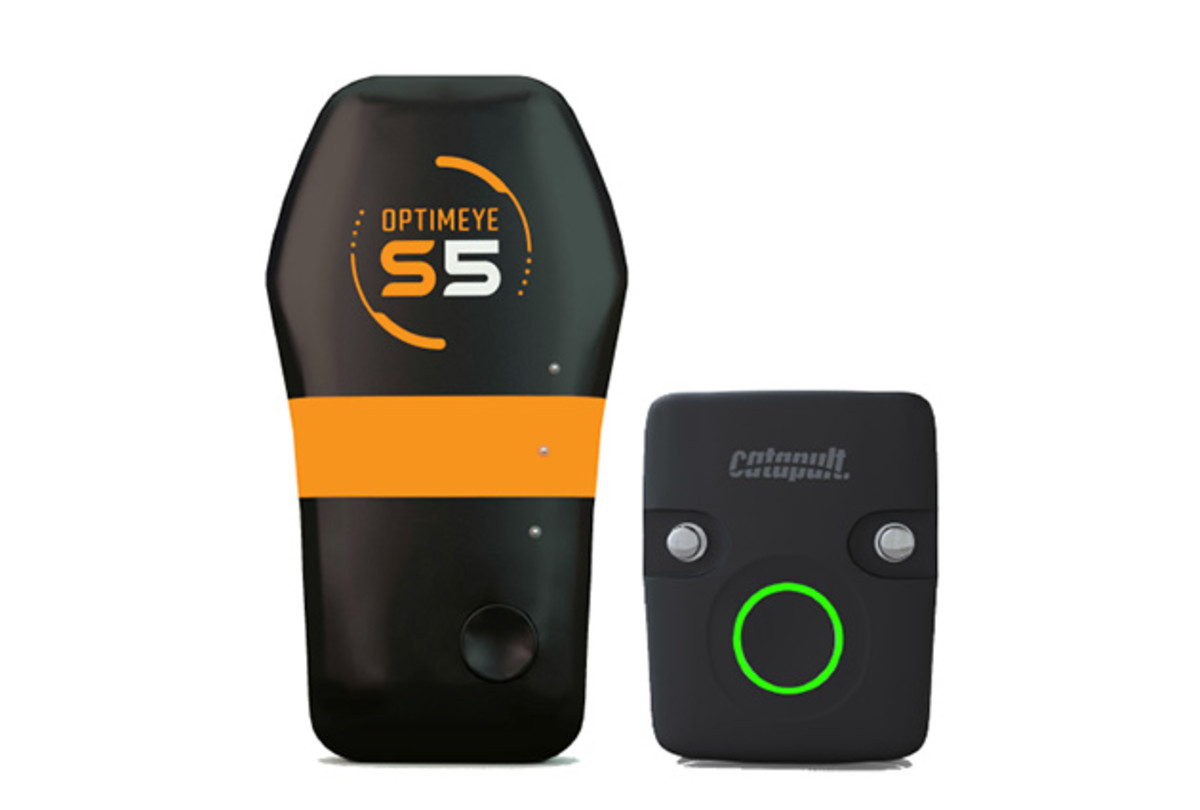Tech Talk: New Catapult device tracks player movement for NFL, NBA

Catapult, an Australian company that is expanding the way in which professional sports teams track player movement, has developed the first device that simultaneously provides inertia-movement tracking and pinpoint location data. And the NFL and NBA have taken notice.
Currently, Catapult uses GPS technology for its 18 NFL clients—the 19 NBA clients can’t get the GPS data with their sensors—combined in the S5 model with inertia sensors to track all sorts of individual movements, forces and collisions through gyroscopes, accelerometers and algorithms. But what you lose on a GPS-based system is pinpoint accuracy in locations, giving you accuracy only to about three feet.
The new ClearSky system, with a T6 tracker, less than half the size of the current S5 device, will use all the same inertia data sensors, but combined with RF ultra wideband tracking systems for precise location indoors or outdoors.
“This is the first device to put them all in one,” Brian Kopp, Catapult’s North American president tells SI.com. “The reason this is important is [that it marks] the two worlds of analytics and sports science merging.”
How it works
At just 1.4 ounces, the new T6 device uses internal sensors to track the same movement metrics Catapult has tracked in the past, the same measurements that trainers use to measure loads placed on athletes. To get better location information—relying on ever-moving satellites renders the GPS data more general than pinpoint—Catapult will set up anchors throughout an arena or stadium to constantly ping the devices for location information, giving an accurate read on a player’s location to within one to four inches.
Teams must install the wideband system in their venue to get the location information, but can still use the inertia data if practicing or playing in venues that don’t have the location tracking installed.
What this means
Currently location data mainly tracks speed and distance. “If all you have is a location, it is hard to do much different,” Kopp says. “While it is nice to know route trees and how fast you went on certain routes, would you like to know the overall explosiveness or power when not the main target or when they are the main target? Now it is not only how far did you run, but with what kind of explosive movements.” And at what point during a practice or game.

Kopp says that combining the force data with accurate location data gives a reason for both performance and tactical coaches to work together. Already teams are using the systems to track player loads throughout a week, knowing how much to work a player in a specific situation so they remain ready for the game. Now they can tie data back to tactical scenarios to know how much each play—whether planned for a specific player or not—costs the team in terms of overall load on a body.
“It can connect back to what a trainer is looking at with what a coach is looking at,” Kopp says.
Where is it used?
Catapult used both a NFL and NBA client for beta testing of the ClearSky system and plans to fully roll out the product this summer for use in the fall. While the professional leagues haven’t yet opened up the use of tracking devices in games, teams use devices throughout practices to monitor loads for weekly and season-long awareness of a player’s levels. Typically, a strength or performance coach monitors each player, tracks the data and can also use information to help them understand how a player is recovering from an injury.
The college side proves a bit different. Catapult has about half of the power five NCAA Division I football teams using its product and many of them wear them in games for a live streaming of data. On the basketball side, teams such as Marquette have also taken to wearing Catapult in games for the real-time information.
The SI Extra Newsletter Get the best of Sports Illustrated delivered right to your inbox
Subscribe
Switching to the new ClearSky system will add new layers of data mining for coaches, a level of sophistication Kopp hopes merges the world of performance and tactical.
Tim Newcomb covers stadiums, sneakers and technology for Sports Illustrated. Follow him on Twitter at @tdnewcomb.
